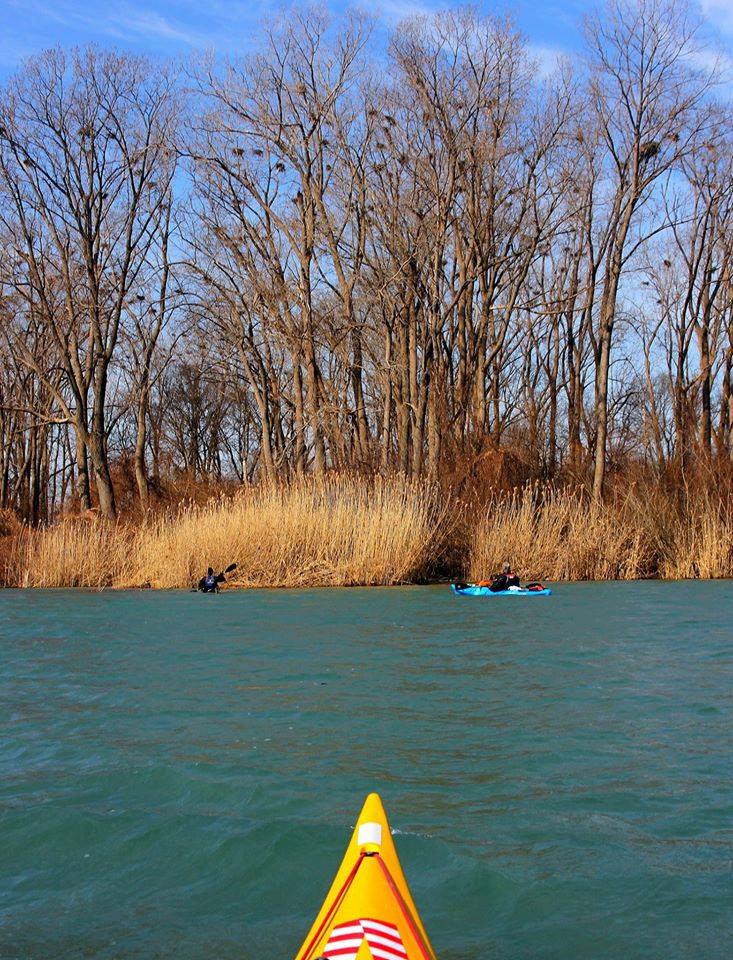
Great Lakes Moment is a monthly column written by Great Lakes Now Contributor John Hartig. Publishing the author’s views and assertions does not represent endorsement by Great Lakes Now or Detroit Public Television.
Have you ever gone for a peaceful walk along a creek or lake and been spooked by the sound of what you think is a pterodactyl? It can be quite unsettling to hear the unexpected frahnk frahnk of a startled great blue heron who just had its fishing expedition disrupted.
The great blue heron can be found throughout much of North America and into Central and South America as well. In Michigan, the great blue heron is classified as a common permanent resident of a variety of wetland habitat types. It occurs scattered throughout most of Michigan but is much more likely to be encountered in the southern half of the state or in the Upper Peninsula. They are a common sight along the Detroit River.
They are often seen standing silently along rivers or lakeshores, or flying high overhead, with slow wingbeats, their neck curved in a tight “S”, head hunched back against their body, and their legs trailing well beyond their tail.
The great blue heron is the largest heron in North America, standing about 3.5-4.5 feet tall. They have a wingspan of nearly seven feet and weigh about eight pounds. It gets its name primarily from its blue-gray plumage. It has a wide black stripe over its eye giving its face a black-and-white appearance. The tops of its wings are two-toned, pale on the forewing with darker flight feathers.
Gregarious great blues congregate together in a few to several hundred colonies and build what can be described by some as bird condos. Ornithologists call these breeding places or colonies rookeries. Great blues congregate in numbers to help ensure safety.
Nest building starts in early spring as part of the birds’ courtship ritual. Males bring choice sticks to the females, who then weave the wood into a bowl. The female lays 2-6 pale blue eggs, then both parents incubate them for about four weeks until the young hatch. The parents bring food to the young at the nest for two months before the young can fly and fledge or leave their nest.
Great blue heron rookeries are somewhat rare but are visible from long distances due to the clumps of nests and the constant comings and goings of adult herons. In the Detroit River, there is an excellent example on Stony Island located in Grosse Ile Township.
“Stony Island’s wetland and upland habitats support the Detroit River’s largest great blue heron rookery with over 140 active nests,” said Joe Robison, southeast region supervisor of the Michigan Department of Natural Resources Wildlife Division.
In 2018, the Friends of the Detroit River, the U.S. Environmental Protection Agency, the Michigan Department of Natural Resources, and other partners completed an $8 million habitat restoration project on Stony Island. This project included building 3,650 feet of rock shoal to protect this 52-acre uninhabited island and surrounding wetlands from erosion. These enhancements and island protection measures provide spawning and nursery ground habitat for fishes and critical habitats for other species like turtles and snakes. Great blues benefit too from these coastal wetland protection measures because these nurseries of life provide essential food for these long-legged, long-necked, coastal birds.
Great blue heron rookeries, such as on Stony Island, also provide exceptional outdoor recreational opportunities for birders and kayakers. It is such a rare and awe-inspiring sight for a kayaker to get up close and personal with a great blue heron rookery.
“Stony Island is one of my favorite places to kayak,” said Paul Gloor of Grosse Ile Nature and Land Conservancy. “In the spring, before the leaves fill the trees, one can see the juvenile heron in their huge nests in the cottonwood trees. Their combined croaks sometimes fall into a pulsing rhythm that reminds me of a freight train. It never ceases to amaze and inspire a sense of wonder.”
So, if you want to be treated to seeing this great blue heron rookery, put it on your kayak trip bucket list for next spring or summer. There is an excellent kayak launch at Sunrise Park on Grosse Ile. This launch is located at the eastern end of Grosse Ile Parkway at East River Road and it is only a short paddle to see the amazing great blue heron rookery of Stony Island.
Catch more news at Great Lakes Now:
Great Lakes Moment: Detroit’s benefits of a national urban park in Windsor
Great Lakes Moment: New video game teaches watershed management
Featured image: Stony Island’s great blue heron rookery, Detroit River, 2017. (Photo courtesy of Steve Lutsch via Michael Rudell)




